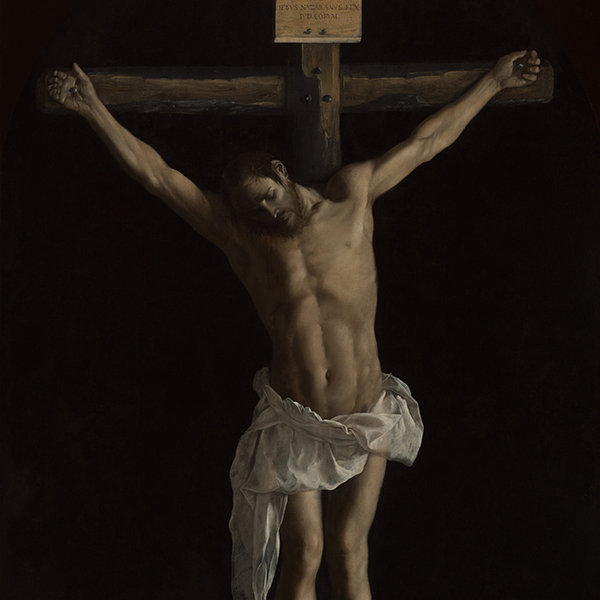When I was in college, I would occasionally take the train from Wheaton into Chicago to visit the Art Institute. I didn’t meander through the galleries in any intentional order or direction, but each time without fail, I found myself in the same grand room in the ‘Painting and Sculpture of Europe’ section, sitting on a small bench, staring up at a massive oil painting of Christ on the cross. Amidst my melancholy, deconstruction, and angst during my college years, this painting pulled me back, again and again, to the person of Jesus– specifically the humiliated, suffering Jesus. You could call it a mystical experience, or the Spirit’s guidance, or perhaps my own dramatic attempt to find meaning and peace with God outside of my frantic mind… but every time I sat to stare at the dying face of Jesus Christ in Gallery 211, I was captivated. I was captivated, and am captivated, by the person of Jesus: my friend, my savior, my God, the only one who truly understands me and gave his very life for me.
This painting is called The Crucifixion. It was completed in 1627 by a Spanish artist, Francisco de Zubarán, and it spans 5 ½ feet wide and 9 ½ feet tall, depicting our Lord slightly smaller than life-size. I’m no art historian, but upon reading a bit about the artist’s context, I’ve learned that Francisco de Zubarán was aligned with Roman Catholic efforts (called the Counter Reformation) to combat some of the aesthetic impacts of the Protestant Reformation by celebrating the “inspirational value” of visual images for Church life.
Some Protestants had strayed from this appreciation for visual pathways of worship, due to a valid concern about idolatry and a righteous hesitancy about depicting God. I’ll leave the nuanced complexities of that conversation to our congregation’s own historians and professors, but I can speak to the intimacy and power of my own encounters with God “depicted” in Jesus Christ via this artwork.
I’ve been reading Advent sermons from the Church’s long history with a group of other pastors this fall in preparation for preaching during Advent. We recently read a sermon from John Chrysostom, a 4th century preacher and theologian. He emphasized the humility that God has woven into the names in Matthew’s genealogy leading to Christ: ordinary, sinful people–Gentiles even–who, despite their lowliness, prepared the way for the Savior’s coming. This line on the intrinsic humility of Christ himself that subsequently flows into his followers struck my heart: “For nothing is so acceptable to God as to number one’s self with the last.”
This painting, The Crucifixion, displays to me the humility of God, the one who numbered himself with the last, fully and finally, in his body, to the point of death.
I think that’s part of what was swirling in my heart each time I’d sit with this painting in college. I came to that gallery in my neediness, and I received the solidarity and power of God to transform me and save me through Jesus Christ’s humility on the cross. A God who is humble, a God who in Jesus Christ dies for us, a God who numbers himself with the last– that’s what is utterly captivating to me about our Jesus. This is the God who says “Take my yoke upon you, and learn from me; for I am gentle and humble in heart, and you will find rest for your souls” (Matthew 11:29). May we be continually, repeatedly captivated and transformed by the humility of God in Jesus Christ– not for the sake of our own virtuous improvement– but so that our neighbors might taste, through Christ in us, the love of God.

